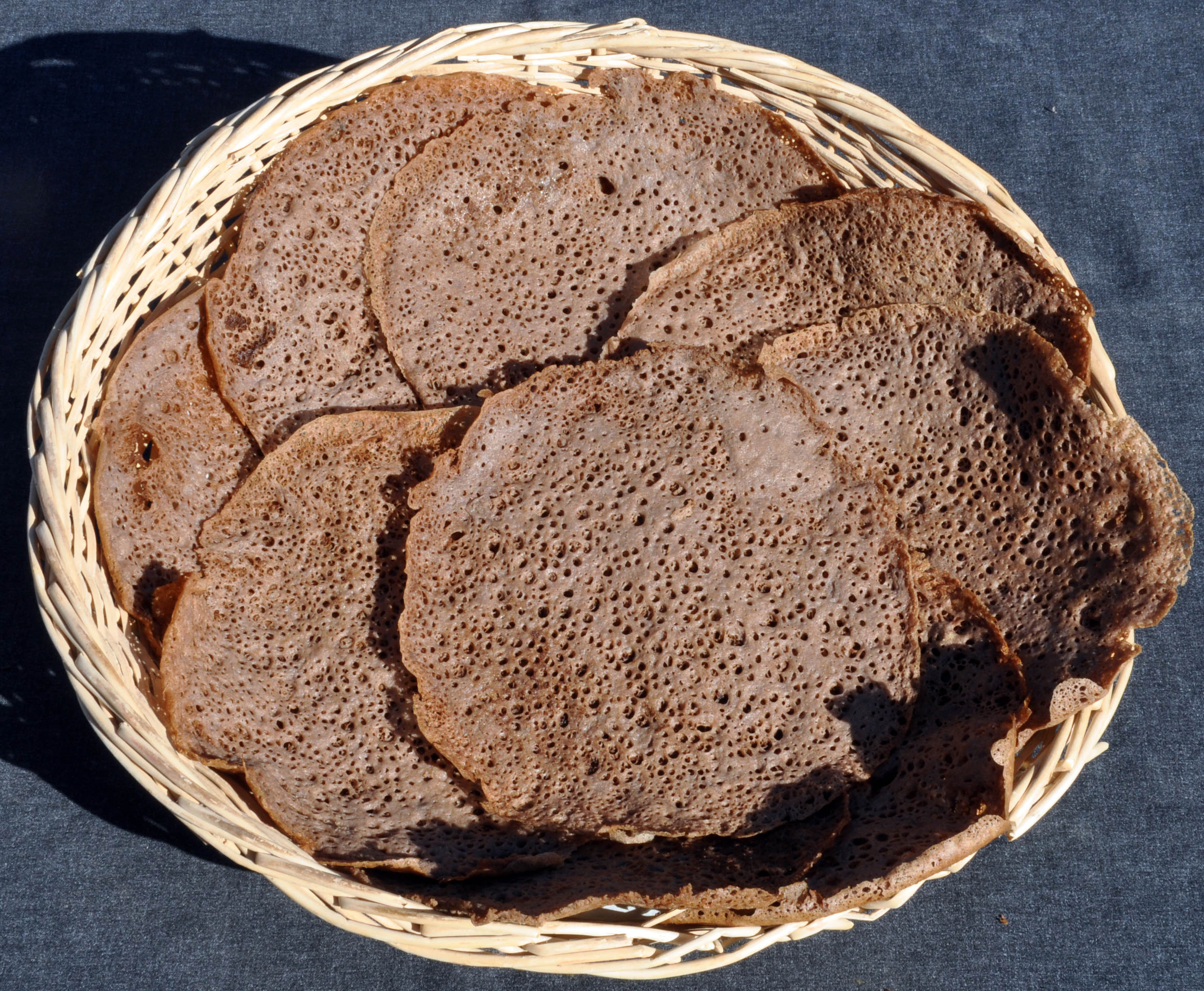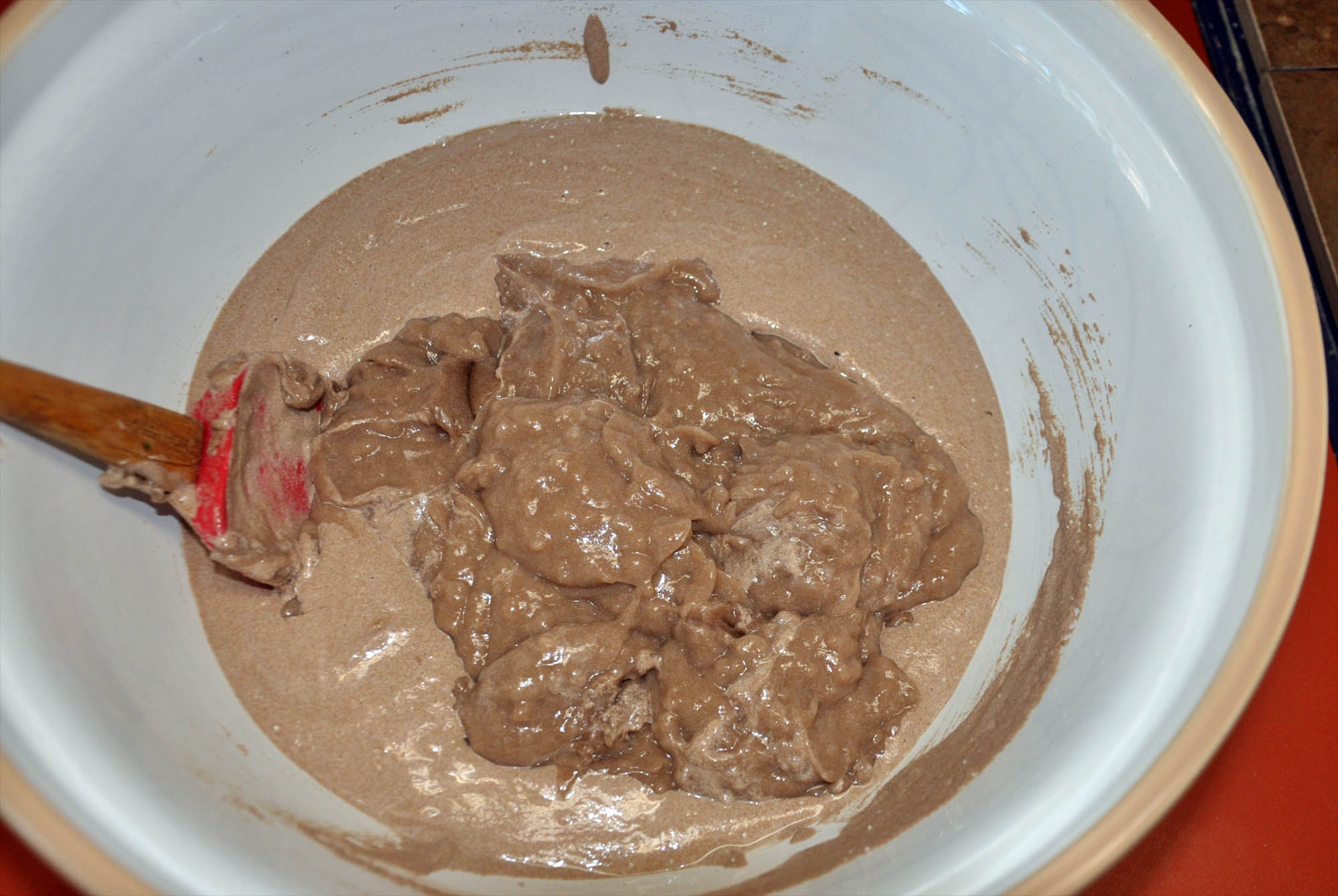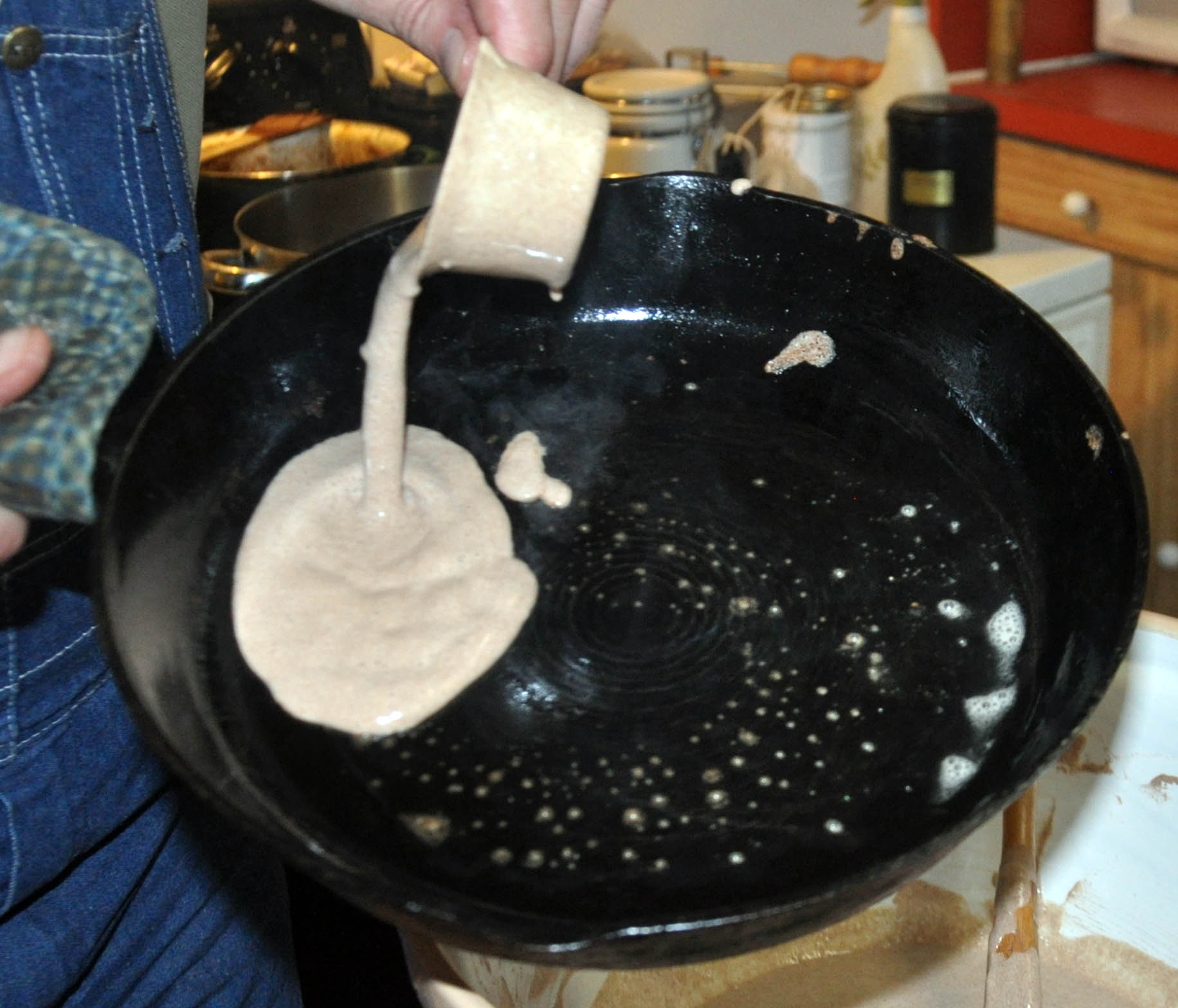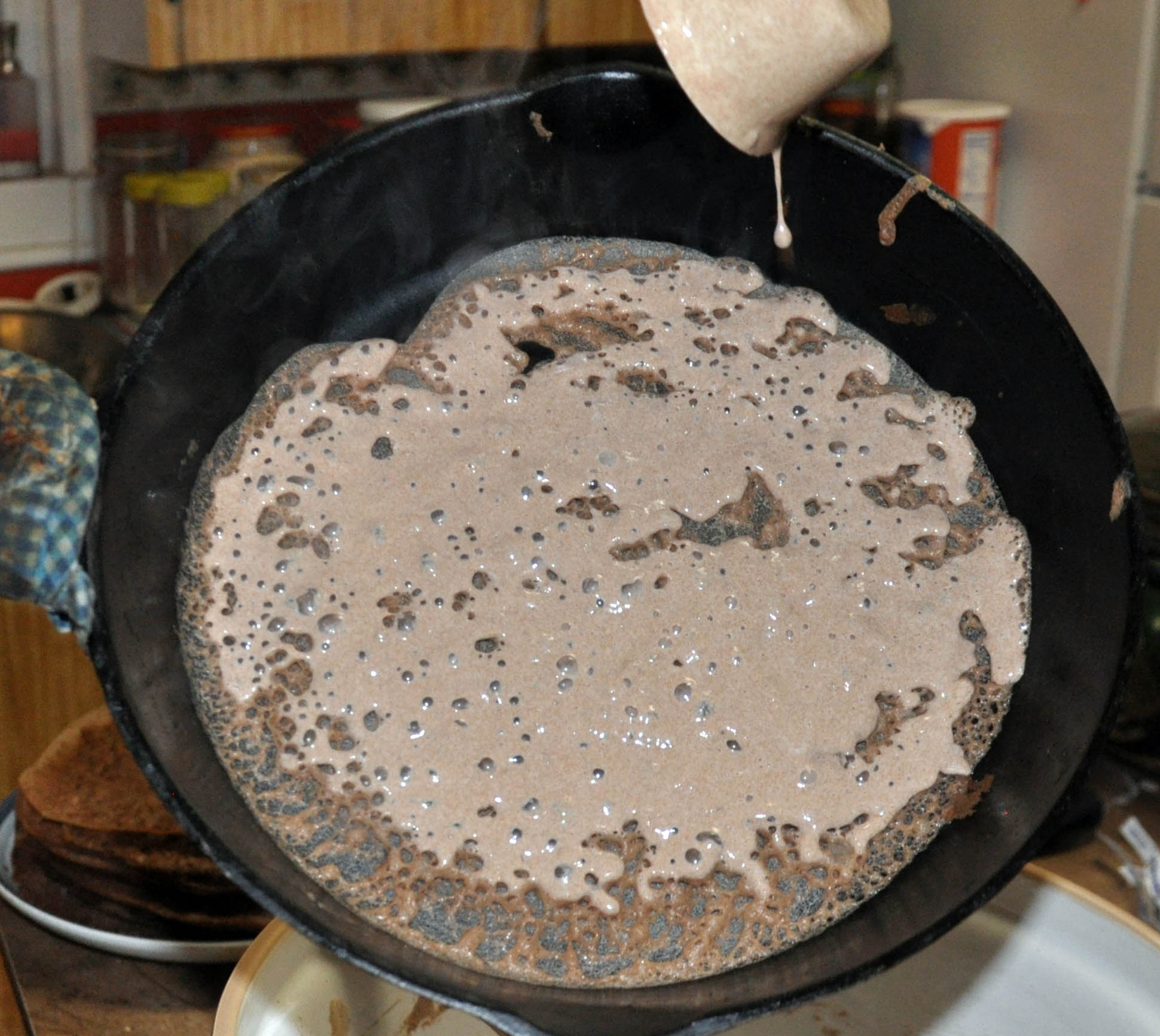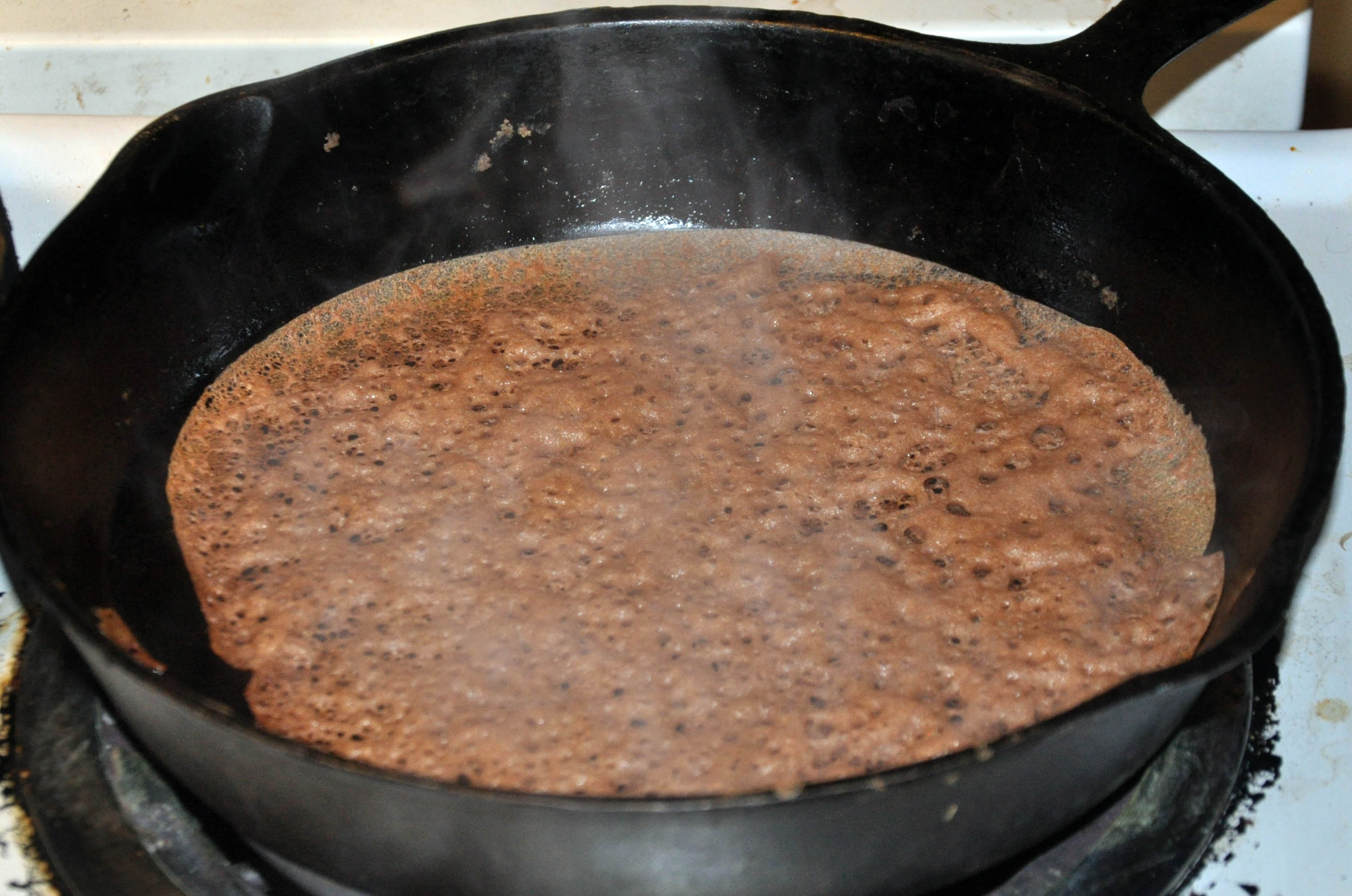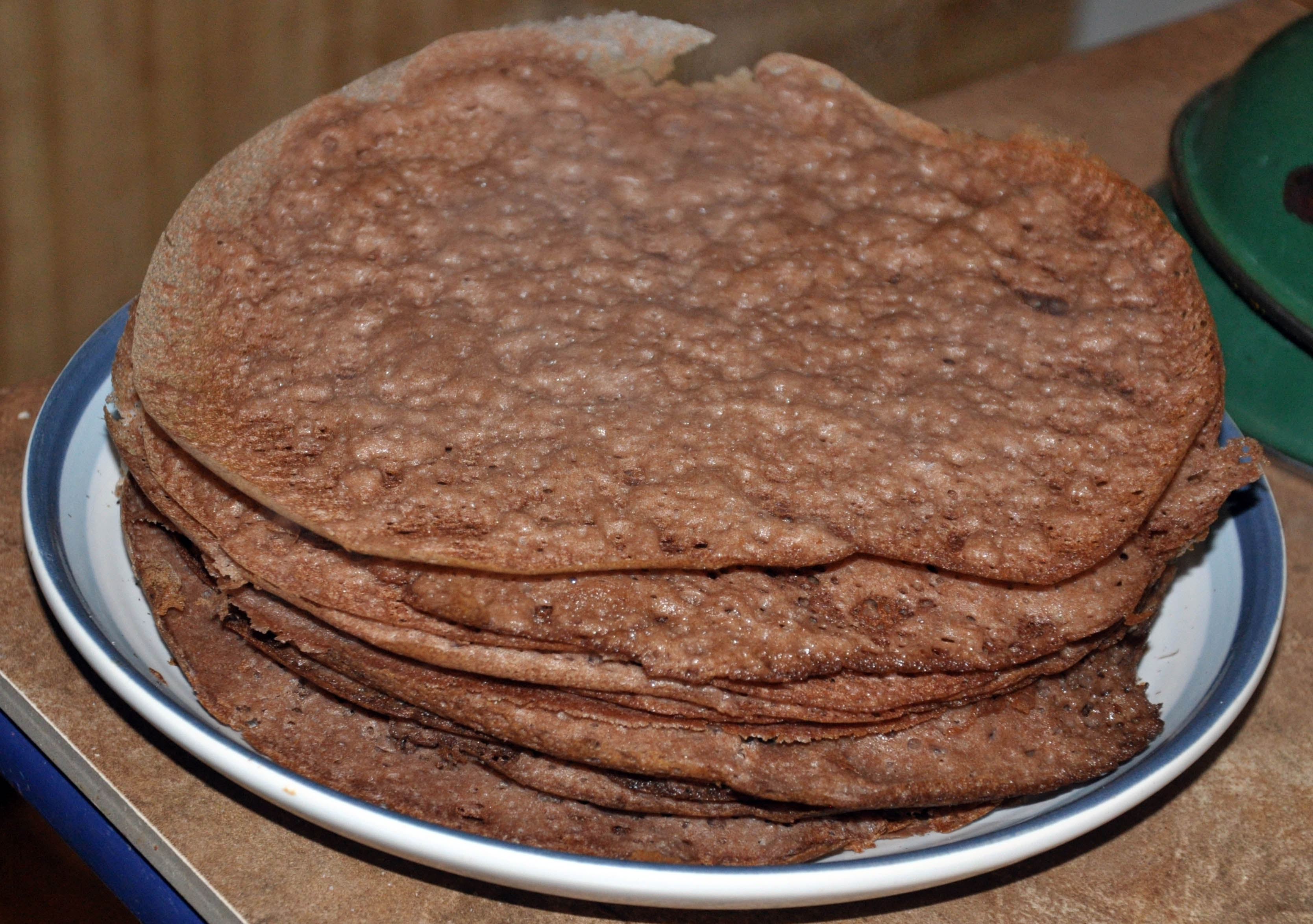
Injera
This crepe or blini-like flatbread is eaten with every Ethiopian meal. They are essential not only because – in the absence of silverware – they are used to pick up pieces of food with the hand from a common plate, but also because of their mildly sour taste which helps accentuate the other flavors of the food served with it. Injera is related to a number of other flatbreads eaten across the Horn of Africa and adjacent areas to the east of the Red Sea, including the Somali canjeero and the Yemini lahoh. It is also reminiscent of south Indian dosas which are also made from a fermented grain batter, although in that case with rice. While injera can be made with any number of flours, traditional injera is made with teff, a grain initially domesticated in the Ethiopian Highlands at least 6000 years ago. Teff has a very high calcium content, contains significant levels of phosphorus, magnesium, aluminum, and iron, and represents a complete source for all eight essential amino acids.The name ‘teff’ is derived from the Ethio-Semitic root "tff", meaning "lost", in reference to the tiny grain size (about the size of a poppy-seed), which are so small that they become lost on the ground if dropped. However, the small size of teff grains also meant that they could be cooked much more quickly and thus required less fuel to prepare. And, because so many more seeds exist within a given volume, teff became a preferred crop of semi-nomadic groups because a field could be planted with a much smaller volume of seed. Commercial production of teff in the USA was pioneered by Wayne Carlson, who became entranced with Ethiopian cuisine during a trip to the region in the early 1970s. Upon return to his farm in Idaho, he began experimenting with teff, and quickly found a market in Ethiopian and Eritrean expats scattered throughout North America. He now sells both wholegrain teff and teff flour through The Teff Company. If your local grocery does not carry it, teff products can also be purchased from them directly via internet. We are going to present two version of injera. For those who have access to teff flour, we cannot recommend highly enough that you use the first recipe which will make authentic Ethiopian injera. Be forewarned, though, that you’ll need to start fermentation of the batter about three days prior to serving the meal. But, the flavor of real sourdough injera is worth every extra minute. For those who cannot find teff flour, and who are limited in cooking time, we also present a flour-based version presented by Jeff Smith in The Frugal Gourmet on our Immigrant Ancestors. While lacking the depth of flavor and authenticity of a long-fermented teff batter, it none the less produces a passable product to serve along with your meal. Both recipes make about two dozen injera. Sourdough Teff Injera1½ pounds teff flour Whisk together flour, water, and sourdough starter in a bowl. Cover and let ferment for two days. On the morning of the third day, remove 1 cup of batter and whisk into 2 cups of boiling water. Continue whisking until it thickens and achieves the consistency of pudding. Remove from heat and let cool to room temperature. Place cooked batter back into the sourdough ferment; whisk smooth, and continue to ferment until batter is full of bubbles; about 4-5 hours.
When the batter is ready, heat a well seasoned cast iron skillet over medium-high heat. When the skillet is hot, quickly run a block of very cold butter over the surface to ensure that it is well oiled. Then remove the skillet from the burner. Pour 1/3 cup batter (for an 8” skillet) into the pan, and quickly rotate the pan at a steep angle to get the batter to spread evenly across the bottom.
This step will require a bit of practice, so don’t worry too much if you don’t get the hang of it the first time; by the 10th you’ll be a pro! Place the pan back on the burner and cover with another pan. This is also an important step as it traps the steam in the pan, making sure that the injera does not dry out and crack. After 3-4 minutes remove the cover. When the edges of the injera begin to pull away from the bottom of the pan, lift the injera out of the pan. Once the pan is well seasoned this will not be a problem, but you may need to initially aid this process with a sharp spatula. The bottom of the injera should be browned. Place onto a stack with the other cooked injera, and keep covered with a cloth to retain heat and humidity. Repeat until all of the batter has been used up.
The step of making teff ‘pudding’ and then adding it back into the batter is essential, as this helps release thickeners that allows the injera batter to hold together while being cooked, and not turn into mud cracks. Quick Wheat Injera6 cups warm water Whisk together water, flour, and club soda. Cook injera on a hot, seasoned cast-iron skillet exactly as described above. Archive |
